Specialists - Year 5 & 6 Week 6
Week beginning - 18 May 2020
Click here to see last week's Specialist page again.
P.E.
30-45 minutes per day
*Download the 60 Second Challenge Activity Tracking Sheet to track your progress! Click here
Monday
Warm-up
60 Second Challenge: Skipping Click here
Ring of Fire!
Steps: Set up 5 objects in a circle, then add markers from the obstacles (see diagram below).
Tall objects which can fall down easily make the best obstacles for this game e.g. water bottles.
Use an underarm throw to land a ball/object inside the obstacles without knocking any of them down.
Start by throwing from the closest marker and move back to the next when you successfully land inside the circle
Questions: Explain the best shape of the ball flight path to keep the obstacles standing up.
How can you change your throw technique to make the ball move in the best flight path?
How did you change your throw when you found you weren’t landing in the target?
At what speed does the ball/object move when you are trying to aim for a small target? Why?
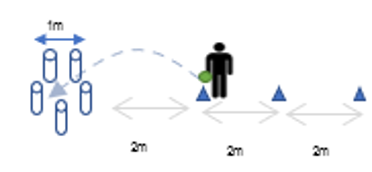
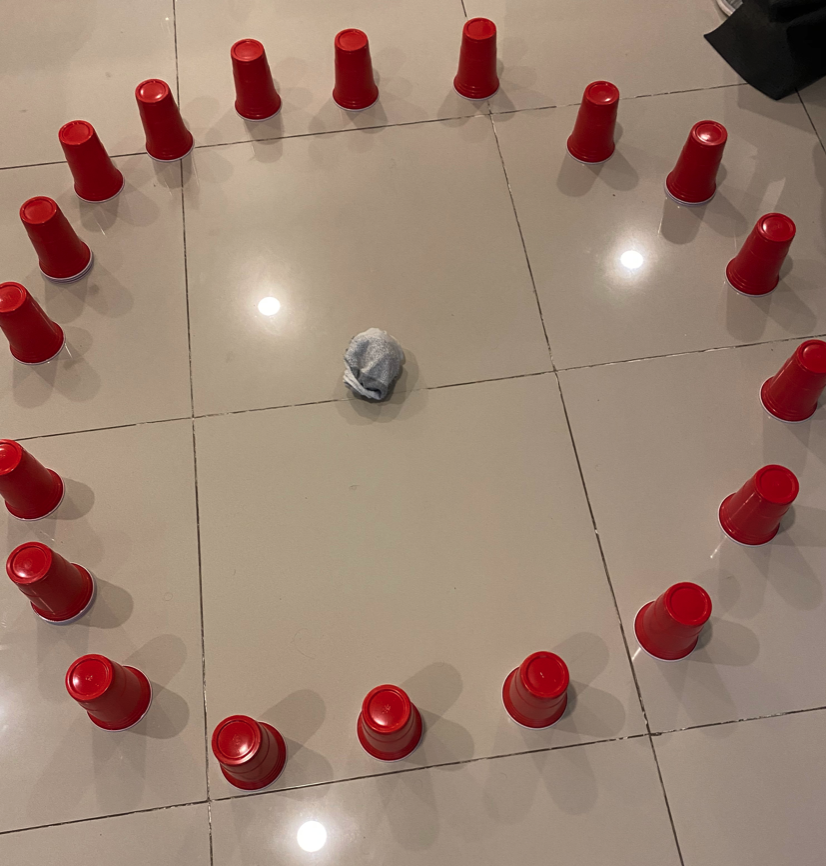
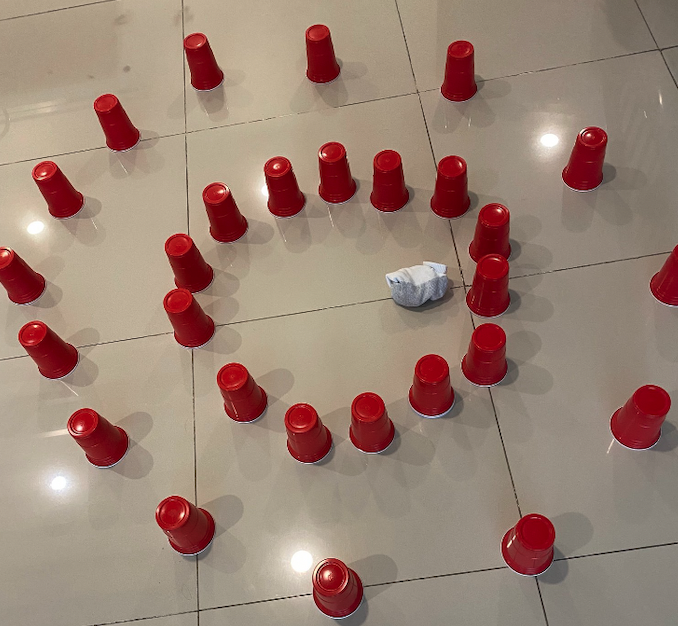
Tuesday
Warm-up 60 Second Challenge: Socks in the Box Click here
Today we are going to practise a wide range of skipping exercises.
If you don’t have a skipping rope, you can use a hula hoop, a spare rope or you can simply use your imagination and pretend you have one.
There are 26 individual skipping exercises and 3 partner ones.
Mr M can do 20 of the 26 individual skipping exercises. Can you beat his score?
Mrs Yue-Lamb can do 18 of the individual skipping exercises. Can you beat her score?
See below for the activities.
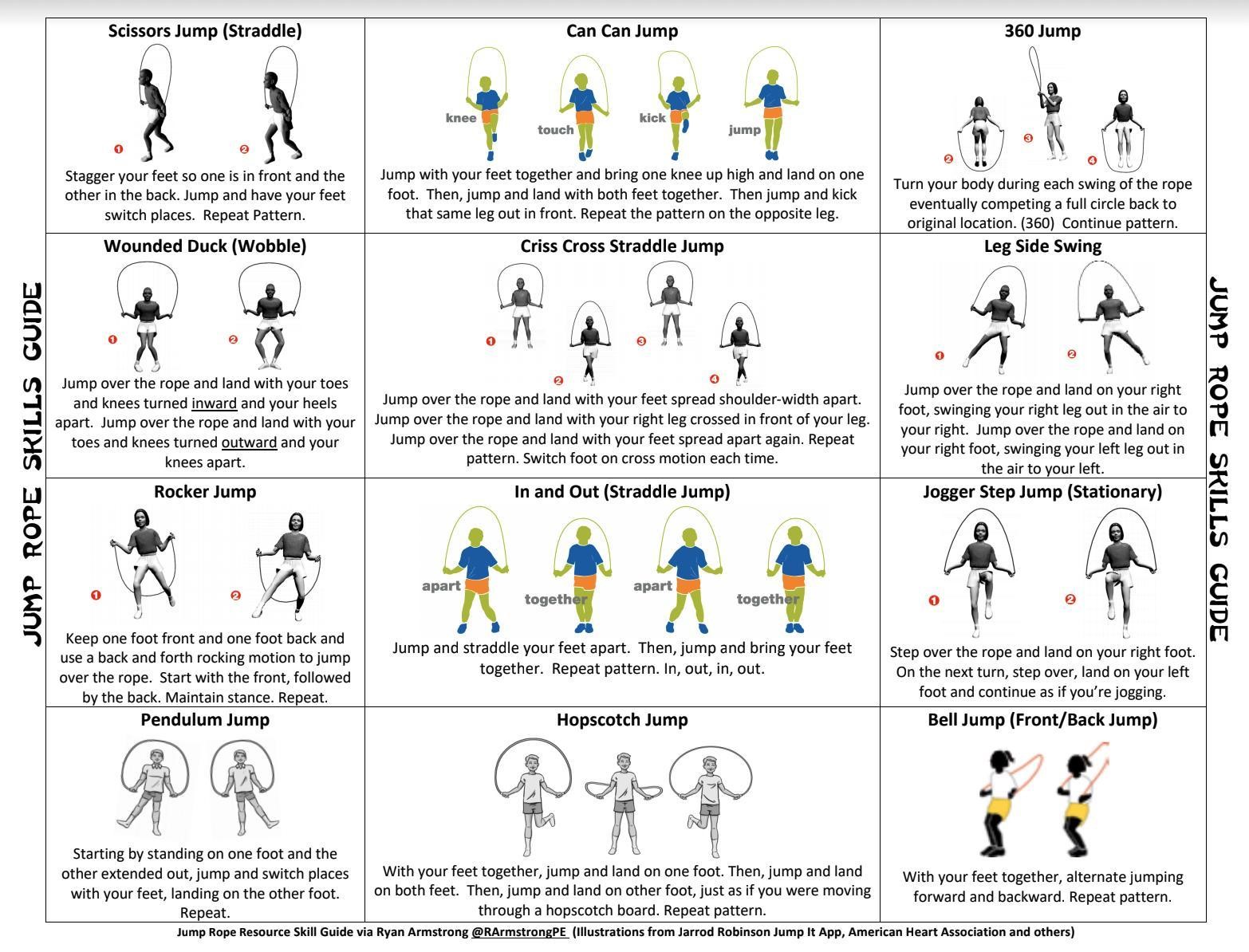
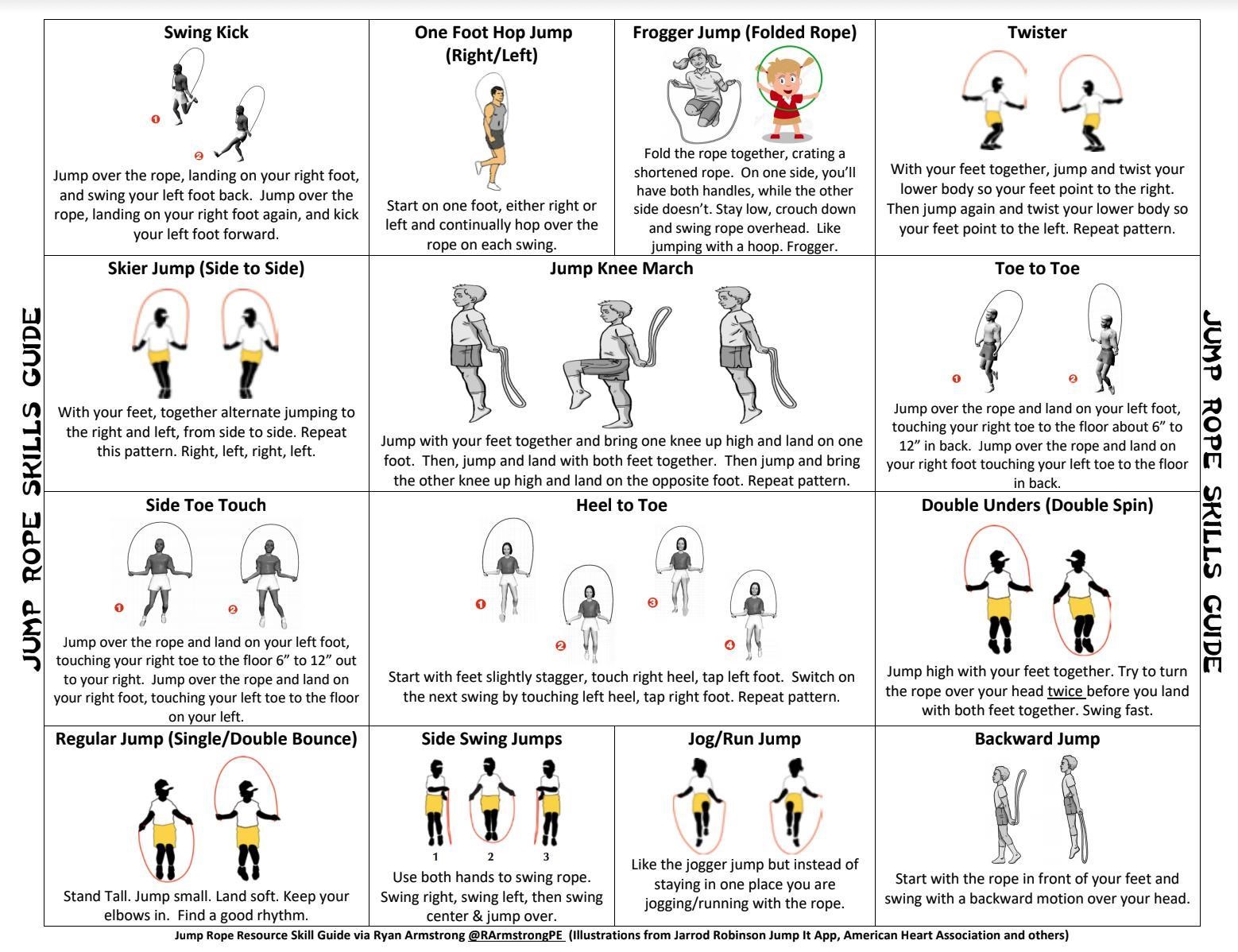
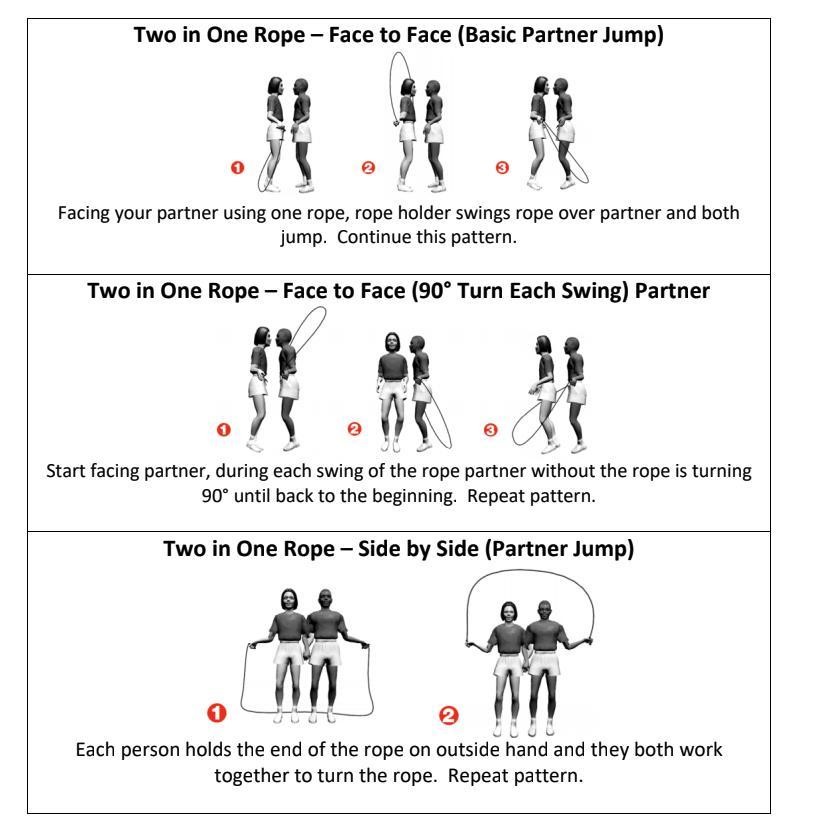
Wednesday
Warm-up 1
60 Second Challenge: Speed Bounce Click here
Warm-up 2
Time how long you can hold the plank position.
To hold the plank position, start by lying flat on your tummy and then lift your body off the ground so only your forearms and toes are on the ground, holding your body up.
Keep your body in a straight line.
Mrs Yue-Lamb can hold for 1 minute and 5 seconds, Mr M can hold for 1 minute and 25 seconds.
Write your time down with the date and compare it to the last time you completed this activity.
Get Outside!
Complete at least 2 of the following activities:
Bike ride around your house
Jog around your house
Walk to the nearest park with a family member
Kick a footy or soccer ball at your nearest oval with a family member (can you create some trick shots?)
Throw a frisbee as far as you can at your nearest oval with a family member (can you create some trick shots?)
Play tennis against a wall and see how many rallies you can get in a row (can you create some trick shots?)
Play downball against a wall and see how many rallies you can get in a row (can you create some trick shots?)
Play some basketball and see how many shots from the free throw line you can get in a row (can you create some trick shots?)
Thursday
Warm-up 1
60 Second Challenge: Squat Jumps Click here
Warm-up 2
How many squats can you do in 1 minute?
Remember when doing your squat, to keep your feet shoulder-width apart, your back straight and pretend to sit down on a chair.
Try and get as low as you can before you lose balance and then spring back up.
Mrs Yue-Lamb can do 48 squats in 1 minute and Mr M can do 47.
Write down your score with the date and compare it for next time.
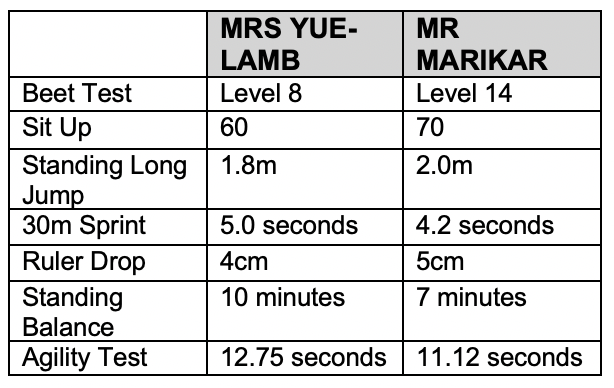
Fitness Challenge
Challenge yourself in this fitness test to see how well you can complete each activity.
It is entirely up to you if you want to do all 7, or you can do 1 or 2.
Remember to write a short reflection about how you did.
How did you feel before and after each test?
Did you do better than you expected?
Did you surprise yourself on any of them? Which one was your favourite? Which one was your least favourite?
Which one was the hardest?
Which was the easiest?
You don’t have to answer all these questions in your reflection, these are just some examples of questions you might think about when reflecting on your tests.
See below for your fitness tests!
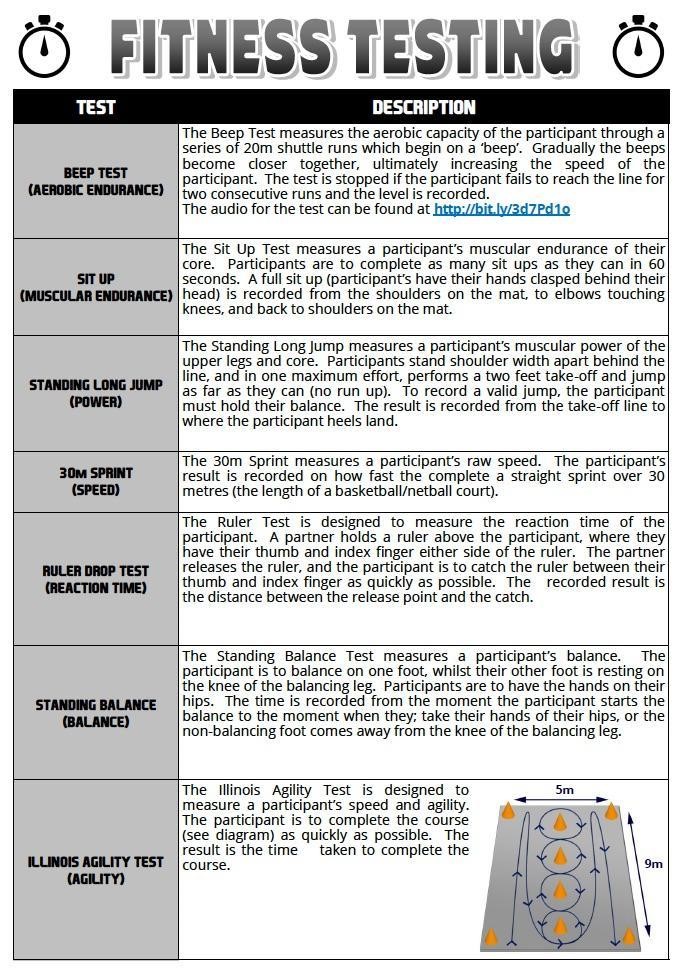
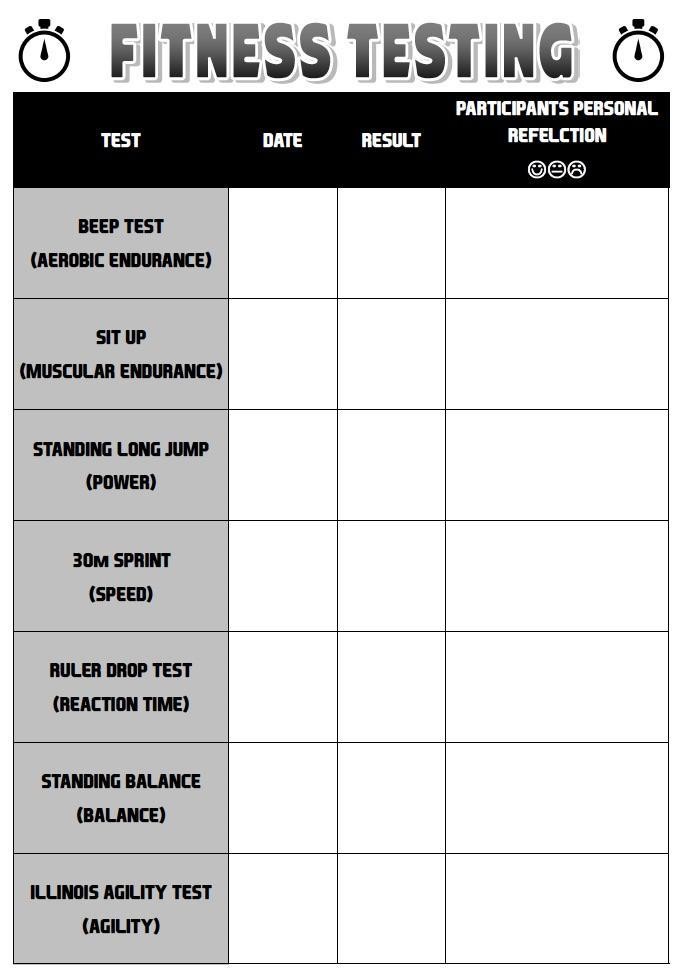
Friday
Warm-up 1
60 Second Challenge: Star Jumps Click here
Warm-up 2
Go Noodle - ‘Fast Feet’ Click here
Build your own striking implement project
Today you will learn to build your own striking implement.
After making your striking implement, challenge yourself to see if you can beat any of the specialist teacher scores!
See below for your challenges!
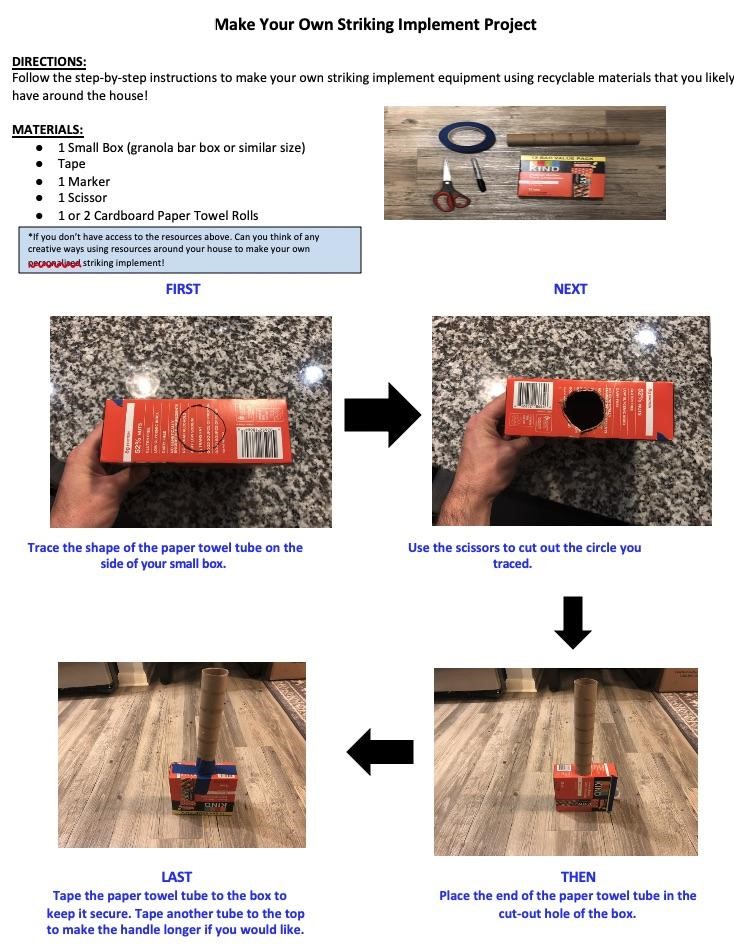
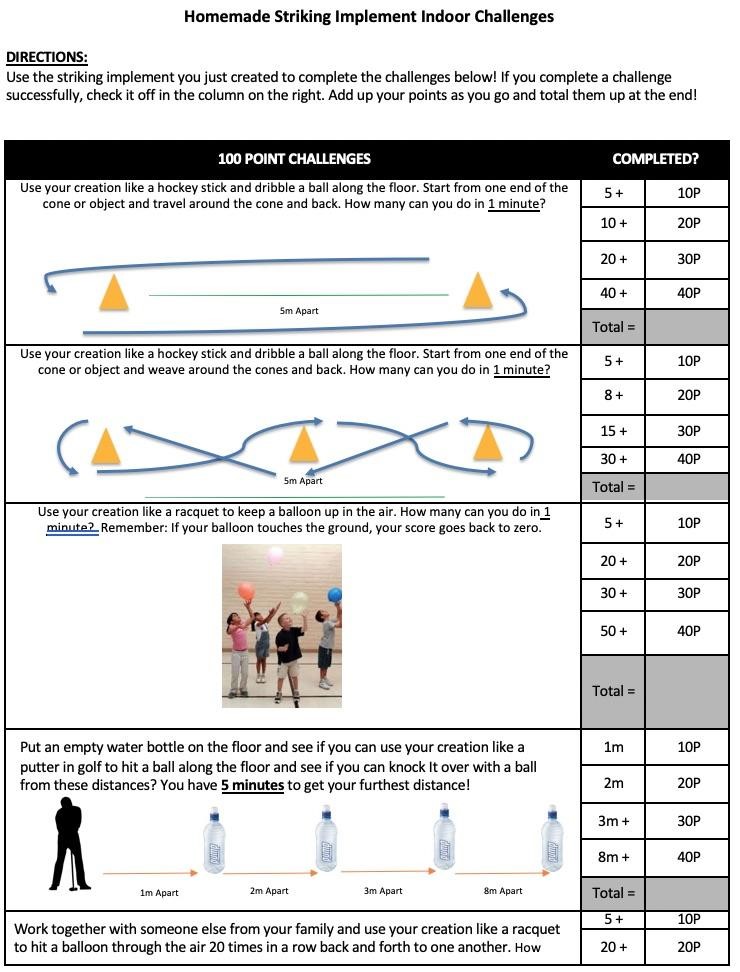
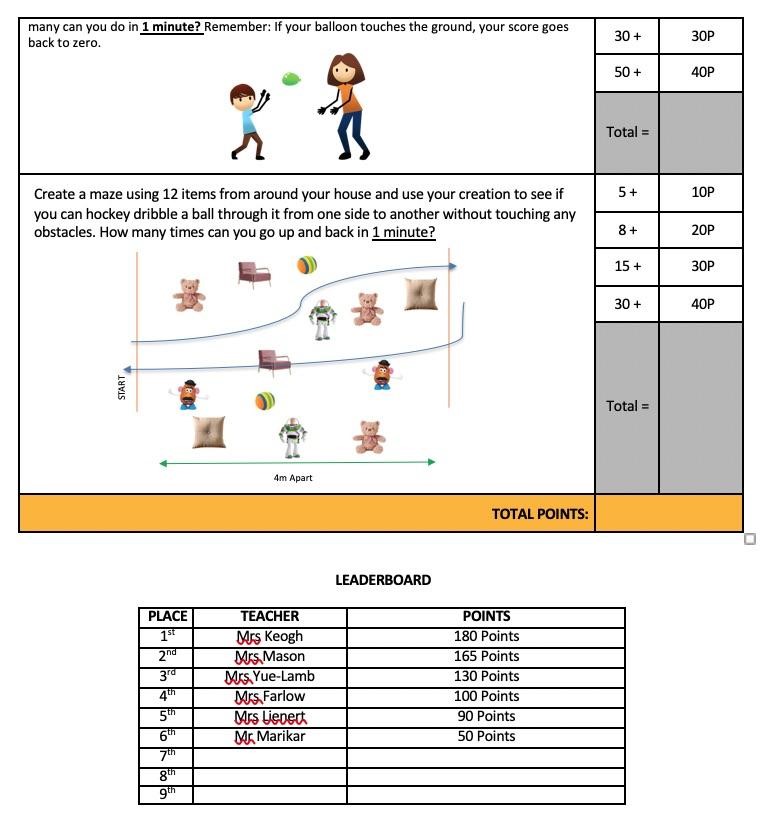
Spanish
30 minutes per week
Learning Intention: We are learning to apply pronunciation rules which help us say our Spanish words correctly.
Spanish Pronunciation Rules- Syllables and Stress (Revision from 2019)
When we use the word ‘stress’ in Spanish, it simply means that this is where you emphasise a certain part of a word.
Take the word ‘convict’ for example.
In English, it has two different meanings and we say them differently BUT we don’t know HOW to say them unless we look at the other words in the sentence.
Have a think about how you would say the following sentence: The judge convicts the convicts.
Can you hear a slight difference in how you say each word? Or is it hard for you to figure out?
In Spanish, you would know how to say the word based on two simple rules or through the use of an accent.
RULE 1: If the word ends with a consonant, except the words ending in -n and -s, the stress will be on the LAST syllable.
ciu-dad (city) - seeyou-da
co-mer (to eat) - co-mair
ga-nar (to gain) - gah-nar
gu-star (to like) - goo-star
re-gre-sar (to return) - reh-gre-sah
RULE 2: If the word ends with a vowel or -n and -s the stress will be on the SECOND-TO-LAST syllable.
cu-an-do (when) - cwan-doh
gen-te (people) - hen-tehkk
pe-rro (dog) - pe-rr-o
gui-ta-rra (guitar) - gee-tah-rah
EXCEPTION TO THE RULE: If the above mentioned rules are not followed,
the stressed syllable will be marked with the accent mark.
es-tá - ess-tah
lin-güís-ti-co - lin-gwiss-tee-koh
Speaking activity: Say each of the words above out loud and stress the parts of the word that are highlighted in bold font.
Listening activity: Listen to the following Epic Book “Soy tan maravilloso” (I am so wonderful) Click here
As the narrator reads the text, listen to how he ‘stresses’ (or emphasises) some words according to the above rules.
If you have time, listen to the book again but pause after each page and read the text aloud.
Do you know why the book is called “SOY tan maravilloso” rather than “ESTOY tan maravilloso”?
Music
60 minutes per week
Learning Intentions:
We are learning how syncopation in music looks and feels through listening and composition.
This will be our last lesson looking at Hoe-Down.
Have a look at this ostinato:

We have started looking at some of these rhythms. The curly notes (quavers) are half a ti ti (a 'ti'), and the rests that look like a curly number 7 are half a saa rest (also known as a quaver rest).
Note that the time signature is in 2/4, 2 full beats in a bar (ti + ti + ti + ti = 2).
Follow the steps below to correctly clap this rhythm:
- Count to 8 out loud trying to keep a steady pace
- Shout out the numbers in BOLD and whisper the other numbers
- Count silently, playing your instrument on the BOLD numbers
- Replace the numbers with the words, one word on each clap
The rhythm can be rather tricky and can feel like we're saying the words at the wrong time. When the less important beats of a bar are made important, we call this a 'syncopated rhythm'.
You can hear a syncopated rhythm in Hoe-Down played by the brass section at 0:44.
Can you list some songs where you hear a syncopated rhythm?
Create your own 8 beat syncopated ostinato. You will need the time signature of 4/4 = 4 beats in a bar
(4 ta/crotchet beats), just like we normally use in class.
Draw your 8 beat circles and use the following rhythms:
Year 5: ta, ti ti, saa, tika tika, ti tika, tika ti, tim ka
Year 6: ta, ti ti, saa, tika tika, ti tika, tika ti, tim ka, tam ti (remember that tam ti goes over 2 beats)
Add lyrics that are related to the song. Play and say this ostinato along with Hoe-Down.
Extension: add pitch to the rhythms.
Use do, mi and sol, and use 'do' at the start or the end of your ostinato to give the listener a sense of finality.
Those of you who play an instrument: see how much of Hoe-Down you can play with the orchestra.
Can you finish at the same time as the orchestra?
For the sheet music Click here
Art
60 minutes per week
Learning Intention:
We are learning to create and display art work considering how ideas can be expressed to an audience.
Reflection: Take this week to complete any unfinished work.
Consider the integrity of your Artwork from home this term and answer these questions.
Did you do your best?
Do you need to go back over an idea? What can you improve or resolve to finish well?
Year 5 Display
Take some photos of your finished Junkbot.
You might like to place it in some kind of setting and do a series of shots.
Consider lighting, scale (size of surroundings) and point of view.
Year 6 Display
Take a photo of your completed skateboard painting.
Take some photos of your completed bird mask being worn.
Showcase the mask at different angles or make a short video. You may wish to elaborate on your character with a costume or with actions and a voice or bird call.
You don’t have to be the person wearing the mask, but you must be the director of ideas. Remember to have fun.
Email these photos/videos of your work to Ms Farlow.
Library
30 minutes per week
Learning Intentions:
We are learning that illustrations help to tell a story.
We are learning that illustrations can create certain effects that may influence the reader.
This week we are illustrating the poetry we created around the 4 elements.
Illustrations help tell the story, set the tone and make the words come to life.
Illustrations provide the reader with an immediate vision of the characters, setting and mood.
Click here to read the story ‘All I want for Christmas is Rain.’ from Story Box Library.
This story focuses on the element of earth,showing how drought can affect the land.
Observe the detail in the illustrations in this story.
These powerful illustrations provide depth and understanding about the story. Notice the use of colour to enhance each illustration.

Use the steps below to assist you to illustrate your poems.
- Read your poem and notice any storyline or characters that can be expressed in the illustration.
- Draw an outline of your illustration and include any images or central themes from your poem by drawing a rough sketch of your ideas.
- Paint or colour your picture using water colour paints or coloured pencils/textas. Reflect on the specific feelings or emotions the poem evokes to help choose your colours. If your poem creates a sad or gloomy mood, select cool colours such as blue or lavender to help translate those feelings in your illustration.
- Let your illustration dry if you need to and return to it later. Reread the poem and notice if there are any elements you would like to change or add. Continue drawing and colouring your illustration until you’re confident it enhances and completes your poem.
© Copyright Laburnum Primary School
